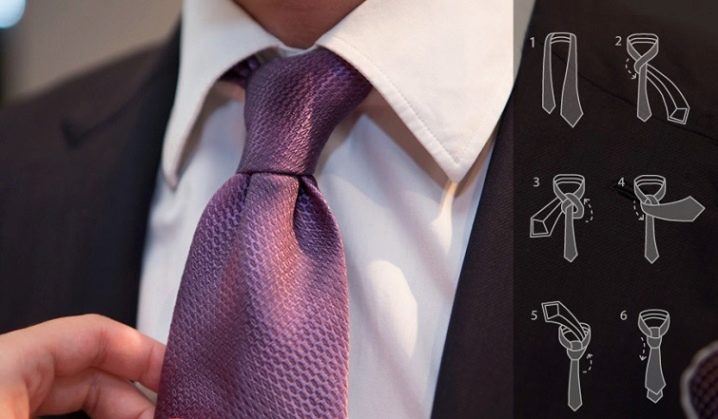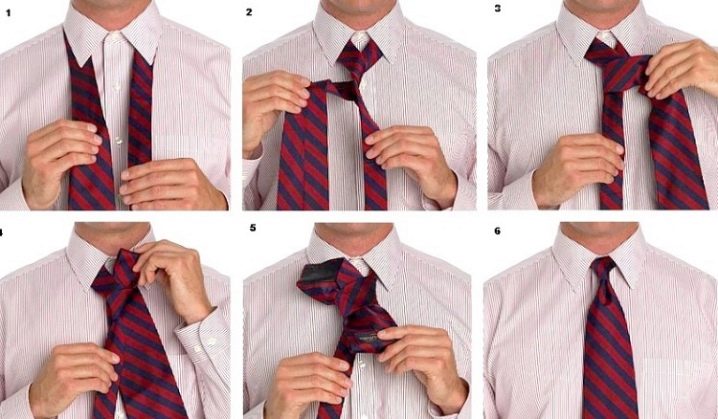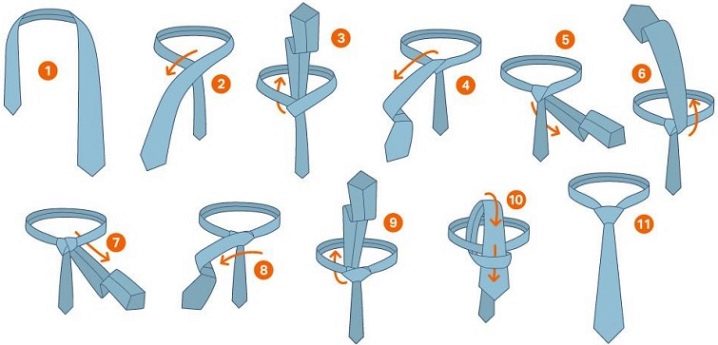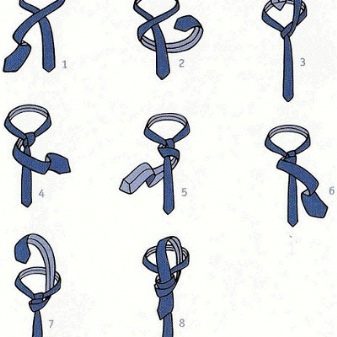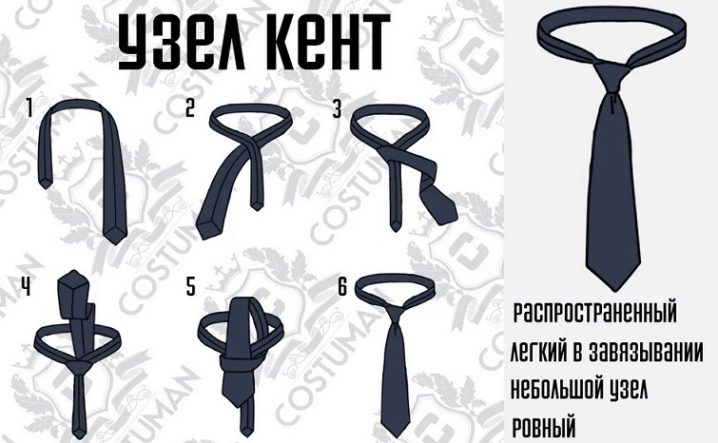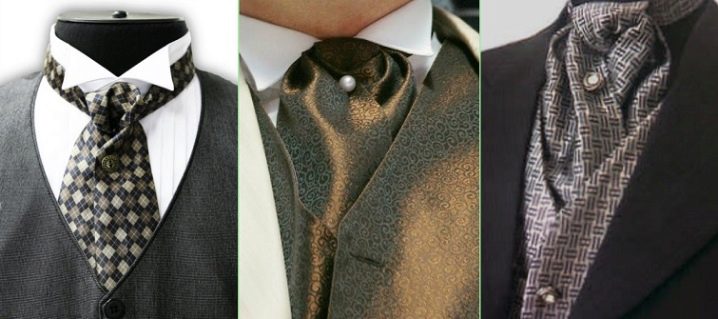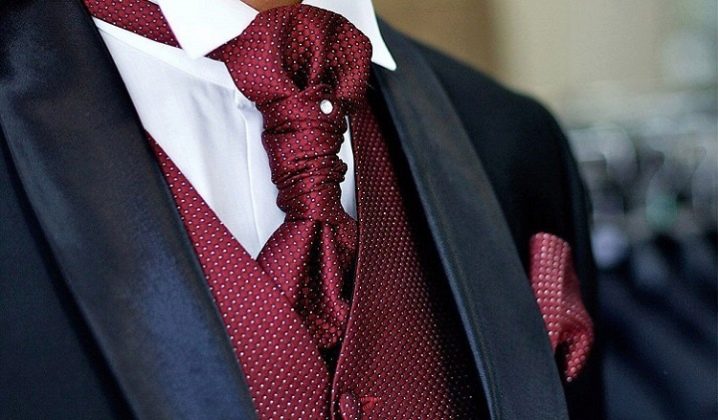How to quickly tie a tie?

Unfortunately, modern men are poorly versed in the types of ties, as well as in what cases they are used. In addition, many do not know how to tie even the classic knot of this ordinary men's accessory, if you have to work in the office or a date with a woman in a restaurant. This gap in the education of a true gentleman should be urgently eliminated by teaching our men to quickly cope with ties of various types in the most urgent situations.
Tie selection
In principle, you can use a regular tie for any event with a shirt, tying it with a classic knot. But many of us like to stand out in order to at least somehow declare ourselves as an extraordinary person. Certain types of ties will also help with this. Consider what types of them suggest to others that a man is quite capable of choosing the right image for himself for the upcoming events. There are several types of ties that can be used in a particular life setting.
- Classic. These varieties, as mentioned above, are used in a variety of cases: wedding, birthday, date, corporate party, everyday office work, and so on. It is supposed to use the accessory in a formal suit for a business or work mode in a modest and monophonic color scheme.
These include ties of the following types: ordinary (traditional), regattas, windsor.
- Festive. Some classic types of ties may also work here, but the color needs to be chosen brighter, perhaps in several shades.
In addition, the following types of ties, related specifically to festive celebrations, will come in handy: Plastron, Shar Pei and Ascot.
- Exclusive. This group includes several models of this item of men's dress: bolo, lavalier, as well as the well-known butterfly and bow.
Varieties of lung nodes
There are over a hundred ways to tie ties, but nowadays, no more than a dozen knots are used. There is even a version of the model of this accessory called regattas, which does not need to be tied - the knot in such a tie is already ready, all that remains is to put it around the neck under the shirt collar and fix it (elastic band, buckle, braid). Regatta is a very common model among military people, whose duty often takes about a minute to get ready. But this solution is not suitable for special occasions and celebrations. In any case, men will need the ability to tie ties in different knots, from which the easiest ways should be chosen.
There are the following types of simple knots:
- simple;
- double;
- triangle;
- triple;
- cross.
Let us explain the ways of tying the named knots in more detail.
Simple
This method was developed quite a long time ago, however, it has not lost its relevance until now. The classic version of the tie is tied around the neck so that the seam is inside, and the ends hang down to the chest. Moreover, the narrow end of it should be on the left, and the wide one - on the right side of the person who is knitting a knot for you. If you tie a tie on yourself, then the ends of the tie will be in the opposite position: wide under the left hand, narrow under the right. Further, the algorithm is as follows (the assistant ties up).
- The wide end is wound from above under the narrow one, again turning out to be on the right side, but with a seam outward.
- The wide edge of the tie is wound behind the neck loop and stretches down under the narrow end towards the right hand of the person, on whose neck a knot is tied (thus, the wide end is on the left side of the helper, with the seam outward).
- Now the wide edge is wound to the right over the narrow one (the seam is inside), and already from the right and from the bottom it is pushed into the neck loop with the end up (the seam of the remaining wide edge after the neck loop should be outside).
- The remaining wide part of the tie is inserted into the resulting loop downward over the narrow end (the seam is already inside).
- It remains to tighten the knot, aligning the ends
Double
This knot fits under a shirt with a wide and long collar, and the tie itself should be classic and made of soft material. Such a knot is knitted in the same way as a simple one, but only at the stage of point 3, 2 turns of the thick end of the tie are made over the thin one.
At the very beginning of tying, the thick edge should be lowered slightly below the thin one, so that then they become even.
Triple
In the case of knitting a tie into a triple knot, the action is performed with its narrow end. Now, from the side of the assistant on the right, this very end of the tie should be on the neck of the novice mod (in contrast to the previous knots). Next, you need to perform the following actions.
- The wide side of the tie is held by the knotting helper's left hand so that most of it hangs down freely. The seam remains invisible. The narrow end is taken with the right hand and thrown from above onto the wide one to the left.
- Overlap the wide side with a narrow end, pulling the latter from the bottom up through the resulting cervical knot in the middle.
- Next, the narrow end of the tie is directed down to the left and wound up through the angle formed by the wide end hanging down and by the neck loop line to the right side behind the wide strip. That is, now the narrow end of the tie is in the right corner between the wide strip and the line of the neck loop.
- The narrow side overlaps the outside of the neck loop and goes again to the opposite corner (from top to bottom to the left side of the resulting knot). Thus, it is in the left corner between the neck loop line and the wide strip of the tie.
- The next step is to throw the thin end from left to right over the wide strip and bring it up from bottom to top through the right corner of the neck loop.
- The end of the narrow part of the tie is threaded from top to bottom through the resulting knot due to its last throw from left to right (previous step).
- Through the left corner of the knot, the remaining part of the narrow side is transferred behind the wide strip to the right side of the knot and threaded from bottom to top into the loop that was just formed before the end was thrown from left to right.
- The free end, which should turn out to be very short, is directed to the right (it will be hidden by the shirt collar and neck loop).
- The knot is carefully tightened, making sure that the appearance of the knot is flawless.
Triangle
In another way, this option is called the Hanover knot. It is performed as follows (this time we are trying to tie a tie ourselves).
- We put a tie around the neck. The back seam should be on the outside, the wide side on the left, just below the narrow end.
- We cross the ends so that the narrow one is on top of the wide one, shifted to the right side.
- We put the wide end to the left over the narrow strip, and then we stretch it from under the neck loop from bottom to top.
- Then we direct the wide strip of tie stretched upwards to the right side down and from there we throw it to the left under the narrow end.
- We bring the wide end up to the right and through the neck loop we pull it down to the right, thereby forming a new knot.
- Now we put the wide part of the tie to the left over the narrow end and pull it through the neck loop from the inside from the bottom up.
- It remains only to pass the front part of the wide end of the tie through the last loop from top to bottom, directing it over the narrow side, trim the ends and tighten the knot neatly.
The described method of tying a tie is quite difficult, so you should practice well with it.Such a knot is suitable not only for various celebrations, but is also considered festive and exclusive.
Krestovoy
This method of tying is performed more on wide ties made of heavy fabrics (for example, cashmere or wool), suitable for the cold season. For this, it was invented at the beginning of the last century in Sweden. However, the cross knot looks no less elegant on the classic models of the described accessory with a slight correction: they should be quite wide. The actions are quite simple (we tie ourselves).
- Tie the accessory around the neck with the suture side inward, on the left - the wide end (it should be longer), on the right - the narrow one.
- Both ends are crossed so that the wide one is on top of the narrow one and is directed slightly to the right.
- The wide end bends around the narrow one, emerging to the left under it.
- Further, the wide part of the tie is raised to the neck loop and pulled through it from top to right downward from the inside.
- The wide end is thrown from right to left, placing it on the outside on a narrow strip.
- Now it is necessary to return the wide strip of the tie to the right, but already under the narrow end.
- Once again, the wide part is returned to the left side, overlapping the narrow end.
- A wide strip is pulled through the neck loop from bottom to top from the inside.
- The remaining part of the wide side of the tie is pushed into the formed multilayer "eyelet" from top to bottom.
- It remains only to straighten the knot, trim the ends and tighten the tie completely.
And the fastest knot that can be tied literally in 1 minute is not even the "simple" one described above, but the so-called kent knot. It is tied in just 4 simple steps: we cross the wide and narrow sides of the tie, then with the wide end (it should be under the narrow one) we stretch once around the narrow strip, bring the end through the neck loop upwards from the inside and through the formed "eyelet" we direct it down along the narrow end.
Stylish looks
Exclusive options for knots and ties, for example, are quite suitable for a stylish male look.
- Eldridge - a complex, but rather spectacular knot, invented in 2007.
- Bolo - a cowboy version of a lace with a clip or a brooch.
- Lavalier - a fashionable version of a butterfly for connoisseurs of high style in clothes.
- Shar Pei - a tie for all collars and clothing styles.
For how to tie a tie perfectly, see the next video.




